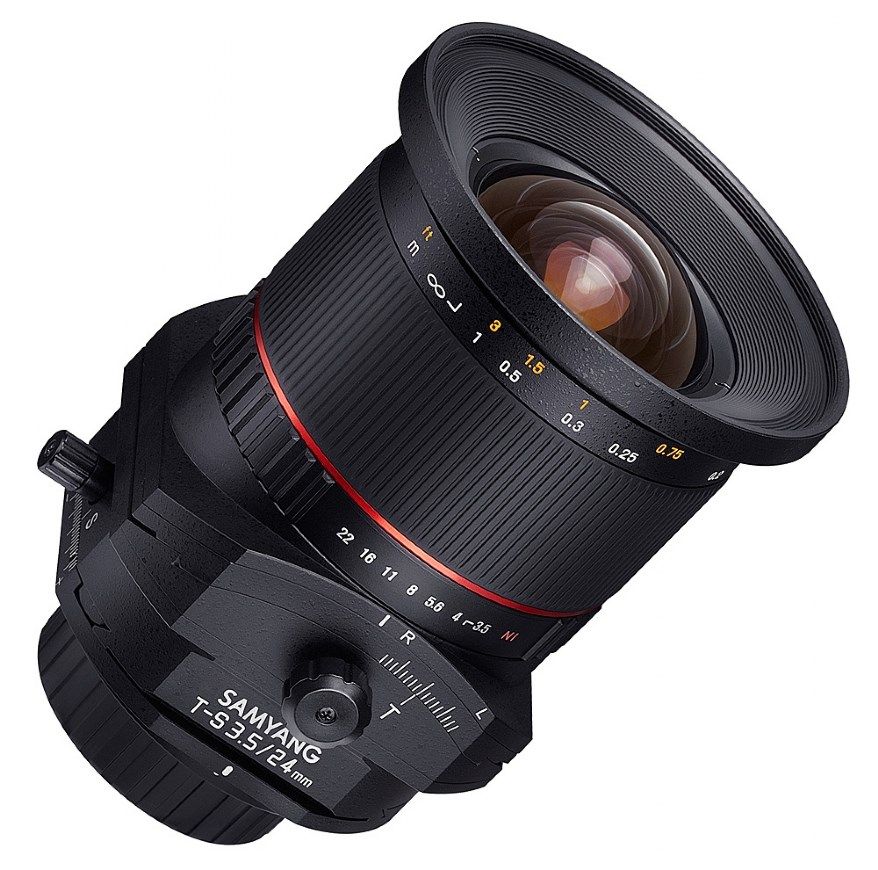Product Description
Samyang T-S 24mm f3.5 ED AS UMC Lens
- Tilt/Shift
- Aspherical Lens
- Minimized Flare and Ghost Effects with Ultra Multi Coating
- Smooth Focus Ring

The Samyang T-S 24mm f/3.5 ED AS UMC is a wide-angle prime lens designed for full-frame DSLR and APS-C size digital cameras. Its optics and mechanic features enable an independent shift of the optical axis and tilt of the lens plane. This feature, combined with the Tilt-Shift rotation function, gives an unlimited range of image creation options with the use of perspective and depth of field. Each optical component of the product is covered with multi-layered, anti-reflective UMC coatings, which provide superb light transmission, high contrast and render the natural colours of the photographed scene. This new Samyang lens is an ideal tool for landscape and architecture photography, but it's also a limitless source of inspiration for ambitious photographers who can express their emotions in new ways, through unique perspectives, precisely placed focal planes, corrected perspective of lines within the frame and high-resolution panoramas.

Tilt & Shift function allows for smooth selection of the focal plane angle within the range from –8,5 to +8,5 and parallel shift of the optical axis by ±12 mm. The sections responsible for the tilt & shift function may be rotated against each other by 30, 60 or 90 degrees and the bayonet mount can be independently rotated to the right by 90 degrees at 30 degree steps.

High contrast and accurate reproduction of colours
The Samyang T-S 24mm model uses 16 lens elements divided into 11 groups. This includes two aspherical lens elements (ASP) preventing the spherical aberration effect and two lens elements with a low dispersion factor (ED), that reduce the chromatic aberration effect to the minimum. This construction allows for perfect details representation and slight bokeh typical of the most sophisticated lenses. Each lens element is covered with multi-layered anti-reflective UMC coatings to ensure perfect light transmission, high contrast and accurate reproduction of colours.






























